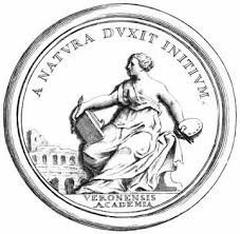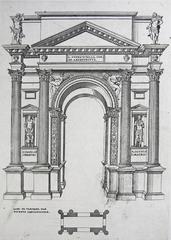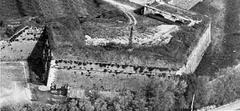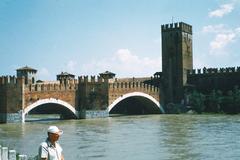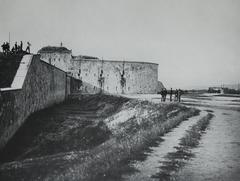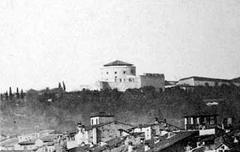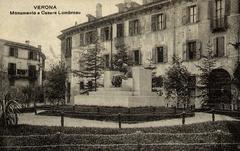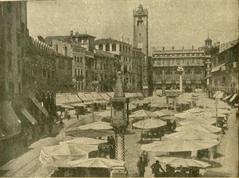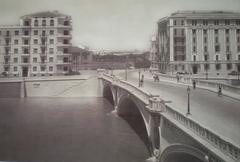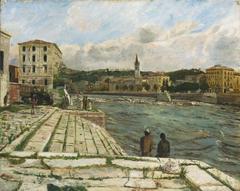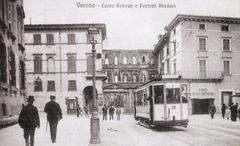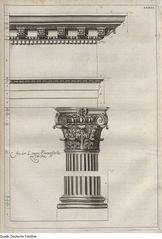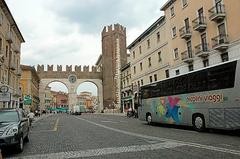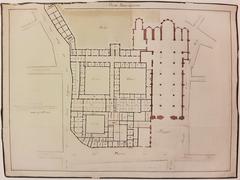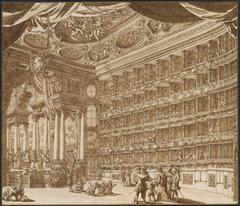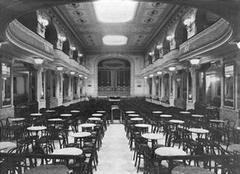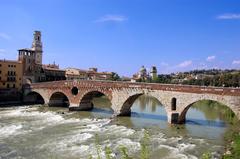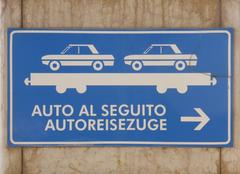
San Fermo Maggiore Visiting Hours, Tickets, and Historical Site Guide in Verona
Date: 04/07/2025
Introduction: San Fermo Maggiore’s Significance in Verona
In the heart of Verona, Italy, San Fermo Maggiore stands as a remarkable testament to nearly two millennia of religious, architectural, and cultural history. Dedicated to Saints Fermo (Firmus) and Rustico—early Christian martyrs whose legacy shaped Verona’s spiritual landscape—the church is an essential destination for those seeking both spiritual resonance and historical depth. The site’s origins date back to the 5th or 6th century, and its current structure exemplifies centuries of artistic evolution, highlighted by a magnificent wooden ceiling adorned with over 400 painted saints and significant frescoes by renowned local artists (Verona Tourism Official Site; Italy Heritage).
San Fermo Maggiore is unique for its dual-level configuration: a Romanesque lower church and a Gothic upper church. This architectural layering symbolizes the enduring continuity of faith and community life in Verona. Beyond its architectural feats, San Fermo Maggiore is an active center of Catholic liturgy, pilgrimage, and cultural events, with revered relics and a vibrant program of activities that connect visitors to Verona’s living traditions (Chiese Verona). This guide provides detailed information on visiting hours, ticketing, accessibility, travel tips, and the church’s artistic treasures, ensuring an enriching visit for architecture enthusiasts, art lovers, pilgrims, and tourists alike (Visit Verona; Sacred Wanderings).
Table of Contents
- Introduction
- Early Origins and the Cult of Saints Fermo and Rustico
- Romanesque and Gothic Architecture
- Interior Art and Chapels
- Visiting Information: Hours, Tickets, and Accessibility
- Highlights and Must-See Features
- Travel Tips and Nearby Attractions
- Frequently Asked Questions (FAQ)
- Tips for a Memorable Experience
- Conclusion
- References
Early Origins and the Cult of Saints Fermo and Rustico
San Fermo Maggiore’s historical roots are closely entwined with the story of Saints Fermo and Rustico, who were martyred during the persecutions of Christians in the early 4th century. Legend holds that they were executed on the banks of the Adige River in 304 CE and their relics, after a period in North Africa, were brought back to Verona in the mid-8th century, establishing a widespread cult of veneration (Verona Tourism Official Site). The earliest known church on the site dates to the 5th or 6th century, with documentary evidence confirming the church’s existence by 775 CE and the relics placed in a crypt beneath the building.
Romanesque and Gothic Architecture
Romanesque Foundations
The current lower church (crypt), built between the late 11th and 12th centuries, is a fine example of Romanesque architecture. Distinguished by bichrome masonry (alternating bands of tufa and brick), barrel-vaulted ceilings, and robust columns, it houses early Christian relics and frescoes dating to the 12th century (Verona Tourism).
Transition to Gothic: The Upper Church
In the 13th and 14th centuries, the Franciscan order transformed and expanded the upper church in the Gothic style, introducing pointed arches, a rose window, and a distinctive wooden ceiling crafted in the shape of an inverted ship’s hull. This ceiling, completed in 1314, is painted with over 400 busts of saints and is considered a masterpiece of medieval carpentry and religious art (Sacred Destinations).
Façade and Ornamentation
The façade displays a blend of Romanesque solidity and Gothic elegance, with lower rounded arches and upper pointed arches, unified by alternating bands of pale tufa and red brick. The rose window and gabled roofline, along with sculpted reliefs around the portal, offer a visual summary of the church’s architectural evolution (Italy Heritage).
Interior Art and Chapels
Inside, San Fermo Maggiore presents a harmonious blend of Romanesque and Gothic features. The nave is flanked by aisles with pointed arches, slender columns, and walls adorned with frescoes from the 12th to 15th centuries. Notable artworks include a 14th-century wooden crucifix, fresco cycles by masters such as Pisanello and Altichiero da Zevio, and the renowned Brenzoni Monument—a blend of Gothic sculpture and Renaissance naturalism (Verona Minor Hierusalem; Cultural Heritage of Veneto).
The lower church’s crypt preserves the relics of Saints Fermo and Rustico and the stone believed to mark their martyrdom (italyscapes.com). The 16th-century cloister, with its Renaissance arcades and frescoes, provides a peaceful setting for contemplation (Sacred Wanderings).
Visiting Information: Hours, Tickets, and Accessibility
Opening Hours
- March–November: Monday–Saturday, 9:30 am–6:00 pm; Sundays and holidays, 1:00 pm–6:00 pm
- December–February: Monday–Friday, 10:00 am–5:00 pm; Saturdays/pre-holidays, 10:00 am–5:30 pm; Sundays/holidays, 1:00 pm–5:30 pm
(Chiese Verona)
Note: Last entry is 15 minutes before closing. Visiting hours may vary due to liturgical celebrations or special events. Always check the official website before your visit.
Tickets and Passes
- Admission: Included in the combined ticket for Verona’s four main churches (San Zeno, San Anastasia, the Duomo, and San Fermo), costing approximately €6–8 for adults. Discounts are available for students and Verona Card holders; children under 18 and visitors with disabilities often enter free (Sacred Wanderings).
- Verona Card: Offers free or discounted admission to San Fermo Maggiore and other major sites (Visit Verona).
- Audio Guides: Available and highly recommended for an in-depth appreciation of the church’s art and history.
Accessibility
Due to its two-level structure and numerous stairs, the church is not fully accessible for wheelchair users or visitors with limited mobility. The upper church is more accessible, but the lower church and crypt require stair navigation (Chiese Verona).
Highlights and Must-See Features
Upper Church
- Wooden Ceiling: A marvel of carpentry, featuring 416 painted busts of saints (Visit Verona).
- Frescoes: Works by Turone, Liberale da Verona, Francesco Caroto, and an Annunciation by Pisanello above the Brenzoni Monument (Veronissima).
- Brenzoni Monument: Noted for its blend of Gothic and Renaissance styles.
Lower Church and Crypt
- Romanesque Architecture: Features cross-vaulted naves and medieval frescoes (Visit Verona).
- Relics of Saints Fermo and Rustico: Housed in the crypt, along with the purported execution stone (Secret Attractions).
Cloister
- Renaissance Ambience: A tranquil space with frescoes depicting the life of Saint Benedict (Sacred Wanderings).
Travel Tips and Nearby Attractions
- Location: San Fermo Maggiore is centrally located at Piazza San Fermo, near Ponte Navi, and within walking distance of Piazza Bra, the Arena, and Via Mazzini (Visit Verona).
- Nearby Sights: Combine your visit with nearby churches (San Zeno, San Anastasia, the Duomo), a walk along the Adige River, and local cafés.
- Best Visiting Times: Mornings and late afternoons are quieter; avoid Saturdays during peak wedding season for the best experience (Secret Attractions).
- Dress Code: Shoulders and knees should be covered as a sign of respect; maintain silence and avoid flash photography during services (Sacred Wanderings).
Frequently Asked Questions (FAQ)
Q: What are the San Fermo Maggiore visiting hours?
A: See opening hours under “Visiting Information.” Always confirm on the official site prior to your visit.
Q: How much do tickets cost?
A: Included in the combined four-church ticket (€6–8 for adults); free or discounted for children, students, and Verona Card holders.
Q: Is the church accessible for visitors with mobility issues?
A: The upper church is accessible; the lower church and crypt are not due to stairs.
Q: Can I take photos inside?
A: Photography is allowed, but flash and tripods are discouraged.
Q: Are guided tours available?
A: Yes, guided tours and audio guides are available; booking in advance is advised for groups.
Tips for a Memorable Experience
- Plan ahead: Check current visiting hours and liturgical schedules.
- Allow time: Allocate at least 45–60 minutes to explore both the upper and lower churches, the cloister, and the artworks.
- Combine: Use the Verona churches combined ticket for a broader experience of Verona’s religious heritage.
- Respect: Maintain respectful conduct at all times, especially during Mass or religious ceremonies.
Conclusion
San Fermo Maggiore is a living testament to Verona’s spiritual, artistic, and architectural legacy. From its origin as a shrine to martyred saints, through its Romanesque and Gothic transformations, to its role today as an active center of worship and cultural life, the church offers a multilayered experience for visitors. Whether you are inspired by history, architecture, or faith, planning your visit with the latest information on hours, tickets, and accessibility will ensure a memorable and meaningful experience (Verona Tourism Official Site; Chiese Verona; Visit Verona; Sacred Wanderings).
Enhance your trip by downloading the Audiala app for audio guides and up-to-date details, and explore Verona’s other historical landmarks for a deeper dive into the city’s rich cultural tapestry.
References and Further Reading
- San Fermo Maggiore in Verona: History, Visiting Hours, Tickets, and Travel Tips, 2025, Verona Tourism Official Site (https://www.turismoverona.eu/en)
- San Fermo Maggiore in Verona: Architectural Marvel, Visiting Hours, Tickets, and Essential Travel Tips, 2025, Italy Heritage (https://www.italyheritage.com/regions/veneto/verona/san-fermo-maggiore.htm)
- San Fermo Maggiore in Verona: Visiting Hours, Tickets, and Cultural Significance, 2025, Chiese Verona (https://www.chieseverona.it/en/our-churches/the-church-of-saint-fermo)
- San Fermo Maggiore Visiting Hours, Tickets, and Guide to Verona’s Historic Church, 2025, Visit Verona (https://www.visitverona.it/en/poi/the-church-of-saint-fermo)
- Sacred Wanderings: Churches in Verona, 2025, Sacred Wanderings (https://sacredwanderings.com/churches-in-verona-italy/)

